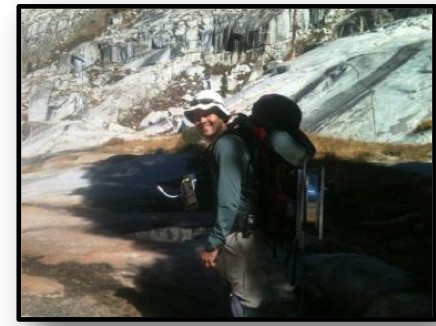|
Postdoctoral Research Associate
Phone: (805) 893-8633 Fax: (805) 893-4724
E-mail: peter.homyak@lifesci.ucsb.edu - Website - Curriculum Vitae
Office: Noble Hall, Room 1103, Ecology, Evolution & Marine Biology University of California, Santa Barbara Santa Barbara, CA 93106-9620
Research
Soil gaseous N emissions (N2, NOx, and N2O) are often ignored in ecosystem nutrient budgets presumably because in mesic sites, hydrologic N losses generally balance N inputs. However, in regions with strong seasonality such as California, whose Mediterranean climate produces strong temporal gradients in soil moisture, gaseous N losses represent an important pathway for ecosystem N loss (Hall et al., 2008; McCalley and Sparks, 2009). Nitrification and denitrification are known sources of both nitric oxide (NO) and nitrous oxide (N2O) (Firestone and Davidson, 1989; Meixner and Yang, 2006), but in semiarid ecosystems, NO is of greater importance than N2O; anaerobic soils are not typical of semiarid environments. Paradoxically, however, the biological processes regulating NO emissions appear to intensify in summer dry soils—a period of low biological productivity—while becoming less important at wet-up, during which abiotic processes appear to control N emissions.
 To further our understanding of soil gaseous N production, I seek to evaluate two widely held paradigms: 1) that in dry soil the biological cycling of N is unimportant and 2) that gaseous N emissions through biotic/abiotic processes are not significant components of ecosystem nutrient budgets. In particular, it is my objective to address these questions: To further our understanding of soil gaseous N production, I seek to evaluate two widely held paradigms: 1) that in dry soil the biological cycling of N is unimportant and 2) that gaseous N emissions through biotic/abiotic processes are not significant components of ecosystem nutrient budgets. In particular, it is my objective to address these questions:
1. Do biotic processes regulate NO emissions in dry soil and does biotic NO production decrease during episodic increases in soil moisture?
2. Does soil wet-up enhance abiotic NO production? Which soil N pools participate in abiotic NO production and at what time of the year is the substrate generated?
3. How does access to soil C regulate NO production and at what soil depth are both biotic and abiotic processes of NO production limited.
|

